The City is currently drafting a permanent sign bylaw. The new bylaw is apparently a response to criticism of the large number of unlicensed, illegal billboards that have appeared throughout the city. Such signs have the effect of dispossessing Torontonians of their own public spaces. The Roncesvalles Village BIA strongly supports City efforts to restore a sense of public ownership of these spaces.
But this bylaw will apply to all permanent signage, not just billboards. The BIA is not yet confident that the new bylaw will properly distinguish between ugly billboards blocking out the sky and the interesting and unique storefront signs that make a commercial main street vibrant and interesting. The City needs to be careful not to impose a stifling, barren uniformity on its commercial spaces.
|
According to staffers contacted by the BIA, the bylaw will likely require that new projecting signs be less than one square metre in size, extending no farther than 45 cm over the sidewalk. That would make many of Roncesvalles’ signature hanging signs noncompliant, if they were hung today (existing signs are to be grandfathered, we hear). Many of these signs are hung to be visible over an awning, a charming feature retained by many of our shops. The BIA’s 2003 streetscape strategy notes: “unlike many other places in Toronto, Roncesvalles has historically allowed hanging signage to protrude over the sidewalk, perpendicular to the building façades. This has the effect of creating a colourful rhythm of boards and lights that overlap and reveal themselves as one walks along the length of the street. This unique character should be protected and promoted. Businesses should be encouraged to hang signs over their storefronts to announce themselves.”
Other BIAs have their own unique approach to signage. In Korea Town, most businesses mount unusual vertical, secondary signs that project slightly out from the storefront, an approach that would not meet the proposed 2.5 metre overhead clearance requirement of the bylaw. Chinatown features a huge number of signs projecting out well past 45 centimetres from both upper and lower level businesses, which would not likely be permissable under the bylaw. It is also not clear the bylaw would have sufficient flexibility to accommodate unusual signs such as those at the El Mocambo, the Silver Dollar, Honest Ed’s or less-famous locations.
Such signs help make their neighborhoods distinct and interesting, and they should be encouraged. But regrettably, the City too often adopts a heavy-handed approach to regulation, which would inevitably prevent the creation of interesting and unusual signs that don’t fit within the bylaw template.
The City is now accepting feedback (signbylawproject@toronto.ca) on its proposed permanent sign bylaw. Please urge the City to support interesting and unusual storefront signage!


2 Comments on “Will Roncesvalles’ hanging signs comply with a new bylaw?”
I remember that when the Yorkdale Mall first opened to the public, that all the store signs had to have the very same design. That conformability soon disappeared.
The overhead hanging signs adds to the style of Roncesvalles making it different from other shopping districts. Just like the old Sam The Record sign or the 1050 CHUM sign, it is the uniqueness that defines a neighbourhood.
I heartily approve of the efforts of Rami at Illegal Signs. We are blessed that not a lot of illegal sign activity is happening in our neighbourhood.
A square metre is 1 meter on each side. None of the signs pictured above exceed that, except maybe Ari’s, and come to think of it, I wouldn’t miss that sign at all (the place, though is another matter).
The 45cm limit is strange, though – wouldn’t that make it possible to see signs only from partway down the block?